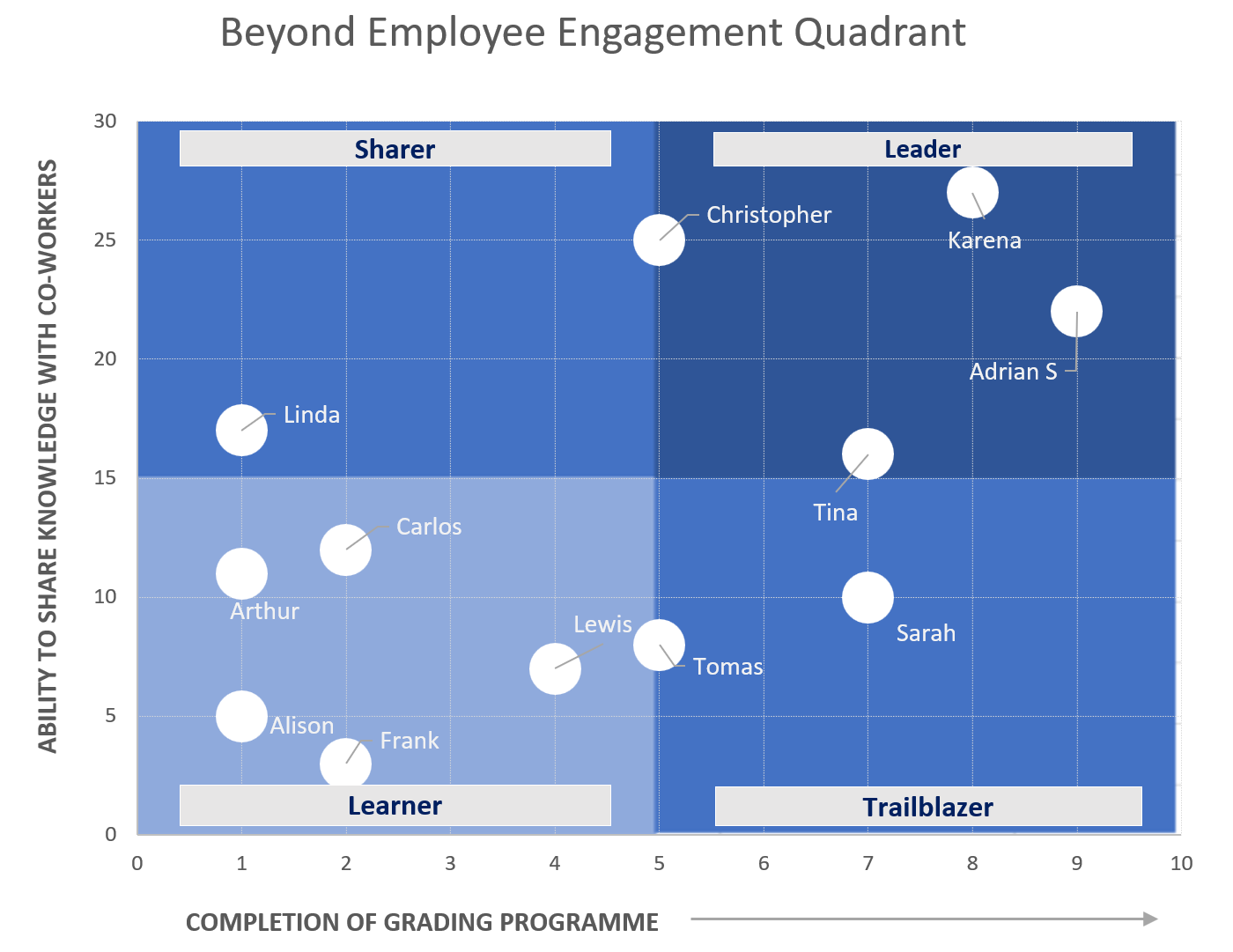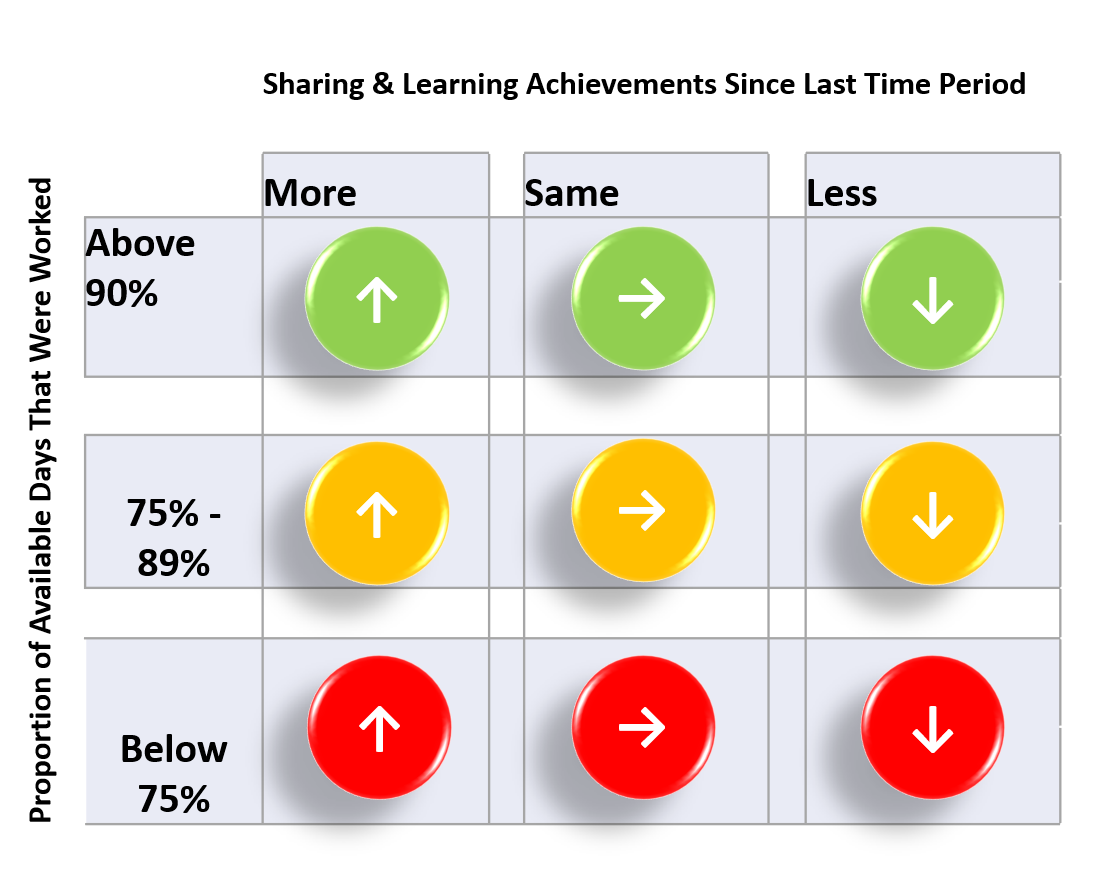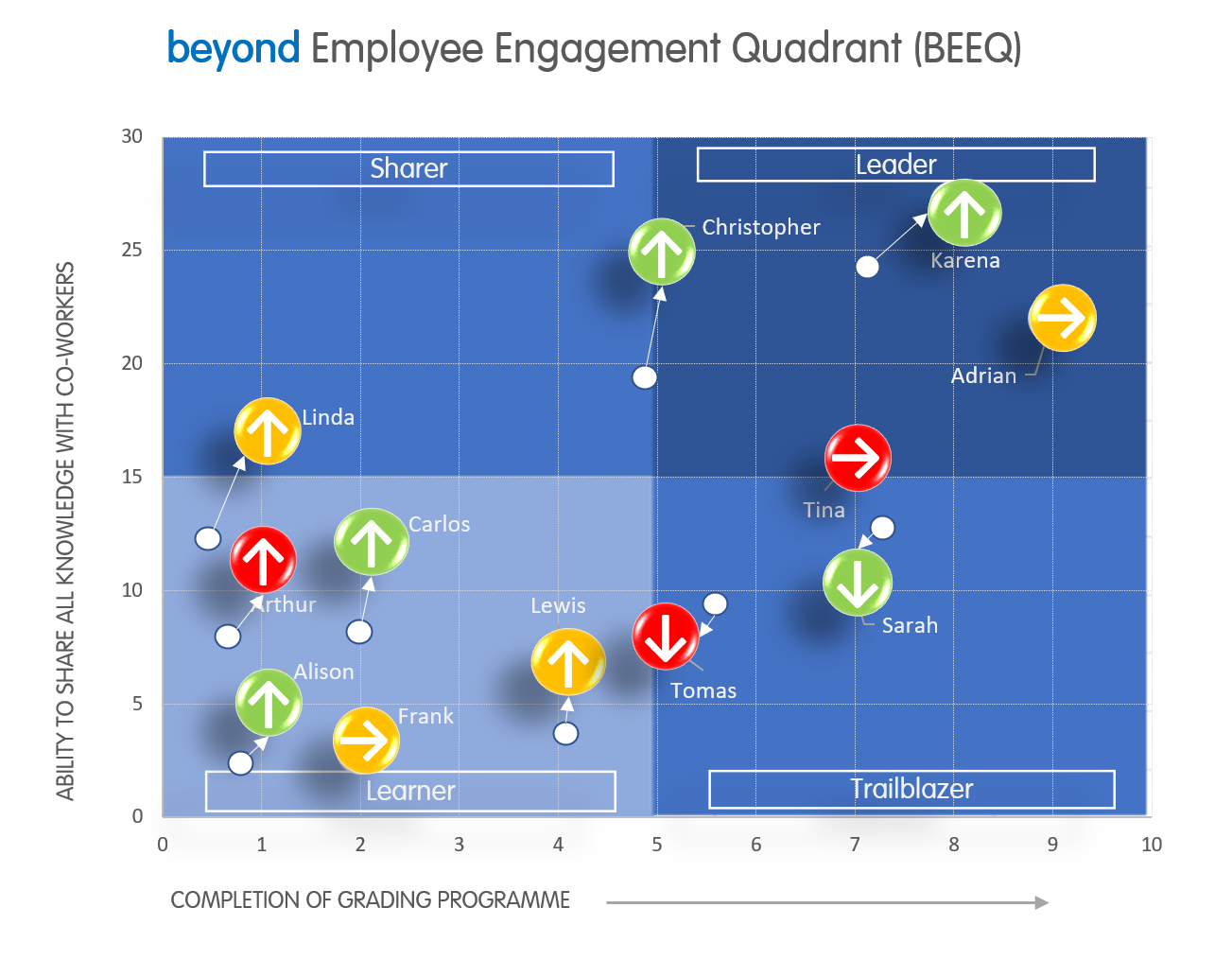Employee engagement, monitoring performance, showing gratitude to employers.
Developing and monitoring team performance are important for managing a successful enterprise. The goal is to ensure workplace wellbeing for teams and effectiveness in their work. World class organizations aim to have high staff morale and performance. This helps in retaining talent and creating a well-balanced workplace. Employee engagement is crucial for organisational success as it leads to higher productivity, efficiency, and employee satisfaction. Does your business truly understand employee retention? Engaged employees are committed, motivated, and passionate about their work. They will go the extra mile and enhance the workplace culture. Drivers of employee engagement, like positive feedback on a regular basis, are ways to cultivate a culture of engagement within your organisation.
What Does Good Look Like?
If your business is growing one common challenge you may face is that of identifying tomorrows leaders. Where are your rising stars and how do you nurture that talent in your organisation? This can be most apparent where you have delegated the responsibility of people management to others and remain at an arm’s length from your staff. Furthermore, where these team members are performing very different tasks that seem incomparable, how do you really know what ‘good’ looks like? A framework to track and reward individual employees is a great way to increase job satisfaction without needing to be in the detail yourself. When making informed decisions on staff promotions do you solely rely on gut instinct from your line-managers?
Setting Clear Expectations
Setting clear expectations is essential in establishing mutual understanding and accountability within a project or task. Clear communication of the goals, roles, responsibilities, and timelines ensures that everyone on the team has a shared understanding of what is expected of them. This helps to prevent misunderstandings, conflicts, and frustrations that can arise from differing interpretations of the task at hand.
Unclear expectations can have significant consequences on team dynamics, productivity, and overall project success. Without mutual expectations, team members may work towards different goals, leading to confusion and inefficiency. This can result in decreased productivity, missed deadlines, and ultimately, project failure. Additionally, unclear expectations can lead to a lack of accountability, as team members may not understand the standards to which they are being held. This can create a negative work environment and erode trust within the team.
By setting clear expectations, teams can avoid these potential pitfalls and work together towards a common goal with a shared understanding of the task at hand. This fosters accountability, improves team dynamics, and ultimately leads to greater success in project outcomes.
Visual Management
Visual tools can enable you as a leader to have meaningful conversations with your managers on performance related matters. There are many visual tools that can track improvements in the workplace that may aid your watching brief. These tools allow you to delegate the detail to that line manager and focus on outcomes. When tacit knowledge is codified and expressed in a visual medium you have a simple means to identify the change. You can then work together on what the data is telling you about the current state of your organisation. Is it getting better, worse or staying the same?
Gamification in the Workplace
Grading systems in the workplace have been around since the year dot. Some have viewed the ranking and performance tracking of individuals as being detrimental to morale in the workplace. This is particularly common for businesses that make visual charts accessible to all employees in that organisation. The verdict is still out on whether putting individual performances indicators on a noticeboard does anything but embarrass and demotivate lower scoring staff members.
One of Gallup’s biggest discoveries: the manager or team leader alone accounts for 70% of the variance in team engagement.
Source: gallup.com
The employee experience deserves to be recognised but not through shaming the less experienced. We have however seen the effective use of the performance table as a useful tool to aid more junior members in bumping up their experience in key areas – seemingly seeking to chase the goal of beating the opposition through the acquisition of new skills. This gamification of knowledge attainment and skills transfer can be highly effective if utilised correctly.
The result of introducing the gamified incentive program was an increase in staff motivation and performance by up to 10%.
Source: beeliked.com
Our experience shows that if you intend to make this information available, it should be handled with care and ought to be introduced gradually. We believe that the first step is to use this data in closed management meetings and during individual appraisals. Once you get a measure of how staff respond to being ranked amongst their peers you can then take a view as to whether you ‘go public’ with the staff scoring matrices.
BEEQ – a People Management Tool
For people management, well-documented training and attendance records can offer useful indicators of rising stars and those team members that may need more support to maximise their potential. Tools that enable your managers to track the effectiveness and morale of their staff are seen as vital performance tools in today’s knowledge-based economy. We have found the technique of plotting the position of staff in an engagement quadrant can be one such useful tool.
The Four Quadrants
We encourage managers to visualise both an individuals attainment of new skills (X-axis) and knowledge transfer between employees (Y-axis) in the workplace. These are great indicators of how engaged an employee is with a company culture that sees value in an individuals development and their aptitude for collaboration.
Learner (bottom left) - At the early stages of gaining experience and not easily able to pass on skills to others.
Trailblazer (bottom right) – Progressing well, demonstrating an appetite for acquiring skills and new knowledge but not passing on knowledge.
Sharer (top left) - Although they only know a limited number of skills – they are willing to share these with others.
Leader (top right) - High levels of skills and demonstrating a clear willingness to share them with others
The Employee Medals
The extra dimension to this visual tool relates to workplace wellbeing and the ability of staff to maintain a satisfactory level of attendance.
The Red, Amber and Green colours of each employee medal relate to attendance in the workplace. Whilst being no standalone indicator of engagement, attendance – when used in conjunction with the arrows that track the periodic change – does offer an early indicator of staff that may be impacted by training plans and workplace well-being programmes. A staff member that is feeling stress may see their attendance levels dip, those that are highly motivated may be bouncing back from a low ebb. Most importantly this tool aims to track change and monitor successful implementation of improvement plans.
Visual Thinking
Our experience shows that many managers struggle to assimilate the trends in complex data sets and can miss out on important indicators that may affect an overall team performance. We have found that building a picture of the current state and then tracking change over time is a great management information tool. Beyond’s simple Employee Engagement Quadrant – alongside other visual management tools in the workplace – can be a great aid, especially for line managers and workplace welfare officers.
Talk to us today about how our Beyond Employee Engagement Quadrant can empower managers and help your business achieve its goals.


